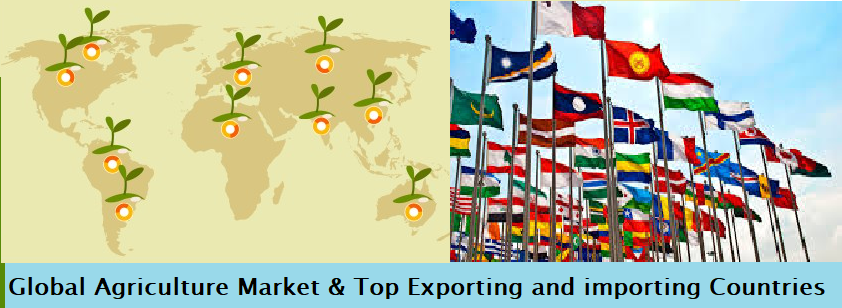
Global Agriculture Market Share, New Demand, Consumers, and Top Exporting and importing Countries
As of my last knowledge update in January 2022, I can provide a general overview of the global agriculture market, but please note that specific data, market share, and trends may have changed since then. For the most up-to-date information, it’s recommended to consult recent reports from reliable sources such as international trade organizations, agricultural agencies, and market research firms.
Global Agriculture Market Overview:
Market Size and Growth:
The global agriculture market is a diverse and dynamic sector encompassing the production, processing, and distribution of a wide range of agricultural products. It plays a crucial role in providing food, raw materials, and employment on a global scale.
Market Size: The agriculture market is significant, with the size influenced by factors such as population growth, dietary trends, and economic development.
Growth Trends: Increasing population, changing dietary habits, and technological advancements contribute to the growth of the global agriculture market.
New Demand and Consumers:
Changing Diets:
Shifts in consumer preferences and dietary patterns impact the demand for various agricultural products, including meat, dairy, fruits, and vegetables.
Growing awareness of health and environmental concerns may drive demand for organic and sustainable agricultural products.
Emerging Markets:
Rising incomes and urbanization in emerging markets contribute to increased demand for diverse and higher-value agricultural products.
Technology Adoption:
The adoption of technology in agriculture, including precision farming and digital solutions, is influencing consumer expectations and product offerings.
Top Exporting and Importing Countries:
Top Exporting Countries:
United States:
Major exporter of cereals, soybeans, and meat products.
A dominant player in the global agricultural trade.
Brazil:
Significant exporter of soybeans, sugar, and meat.
Plays a crucial role in global agricultural commodity markets.
China:
Major exporter of vegetables, fruits, and seafood.
Increasing presence in global agricultural exports.
Netherlands:
A key exporter of flowers, plants, and processed agricultural products.
Notable for its role in the global horticulture trade.
Top Importing Countries:
China:
High demand for soybeans, meat, and dairy products.
Rapid economic growth contributes to increased agricultural imports.
United States:
Imports a variety of agricultural products, including fruits, vegetables, and coffee.
Supplementing domestic production to meet diverse consumer demands.
Japan:
Major importers of grains, meat, and dairy products.
Relies on imports to meet a significant portion of its food consumption needs.
European Union:
Imports various agricultural products to meet consumer demands.
Import patterns vary among EU member countries.
The global agriculture market is influenced by a multitude of factors, including population growth, dietary preferences, and economic development. While certain countries lead in exports due to their abundant resources and production capabilities, others, with growing populations and urbanization, have a substantial appetite for imported agricultural products. As the industry continues to evolve, addressing sustainability concerns, adopting technology, and navigating global trade dynamics will be crucial for the future of agriculture on a global scale. For the latest and most accurate information, it is recommended to refer to recent reports and data from authoritative sources in the field.
